Two masses M and m are connected by a light string going over a pulley of radius r. The pulley is free to rotate about its axis which is kept horizontal. The moment of inertia of the pulley about the axis is I. The system is released from rest. Find the angular momentum of the system when the mass M has descended through a height h. The string does not slip over the pulley
The situation is shown in the figure. Suppose v be the speed of masses at time t. Now the speed of a point of rim of wheel will also be v. So the angular velocity of the wheel at time t is v/r. When the mass M has descended by height h the loss in its potential energy [masses plus pulley system] is Mgh – mgh. The gain in kinetic energy isAngular momentum of mass M = Mvr Angular momentum of mass m = mvr in the same direction Therefore total angular momentum
Related Solutions
Two masses m and are joined by a light string passing over a smooth and light pulley (as shown)
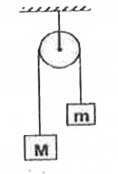 View Solution
View SolutionTwo masses M and m are connect by a light string gong over a pulley of radis r. The pulley is free to rotate about its axis which is kept horizontal. The moment of inertia of the pulley about the axis is I. The system is releaed from rest. Find the angular momentum fo teh system when teh mass Mhas descended through a height h. The string does not slip over the pulley.
View SolutionTwo masses M and m are connect by a light string gong over a pulley of radis r. The pulley is free to rotate about its axis which is kept horizontal. The moment of inertia of the pulley about the axis is I. The system is releaed from rest. Find the angular momentum fo teh system when teh mass Mhas descended through a height h. The string does not slip over the pulley.
View SolutionFigure shows two blocks of mass m and m connected by a string passing over a pulley. The horizontal table over which the mass m slides is smooth. The pulley (uniform disc) has mass m and it can freely rotate about this axis. Find the acceleration of the mass m assuming that the string does not slip on the pulley.
View SolutionTwo blocks of masses and are connected by a light string going over a pulley of mass and radius as shown in the figure. The system is released from rest. Find the angular momentum of system when the mass has descended through a height . Assume no slipping.
 View Solution
View Solutionदो द्रव्यमान तथा M एक घिरनी पर से होकर गुजर रही एक रस्सी से जुड़ हुए है (चित्र 18.E4)। द्रव्यमान m चिकनी क्षैतिज टेबुल पर फिसलता है। घिरनी की त्रिज्या r है तथा अक्ष के परितः इसक जड़त्व आघूर्ण I है। यह अपने अक्ष के परितः मुक्त रूप से घूर्णन कर सकती है। यह मानते हुए कि घिरनी पर रस्सी फिसलती नहीं है, द्रव्यमान M का त्वरण ज्ञात करें
 View Solution
View SolutionFigure shows two blocks of masses m and M connected by a string passing over a pulley. The horizontal table over which the mass m slides is smooth. The pulley has a radius r and moment of inertia I about its axis and it can freely rotate about this axis. Find the acceleration of the mass M assuming that the string does not slip on the pulley.
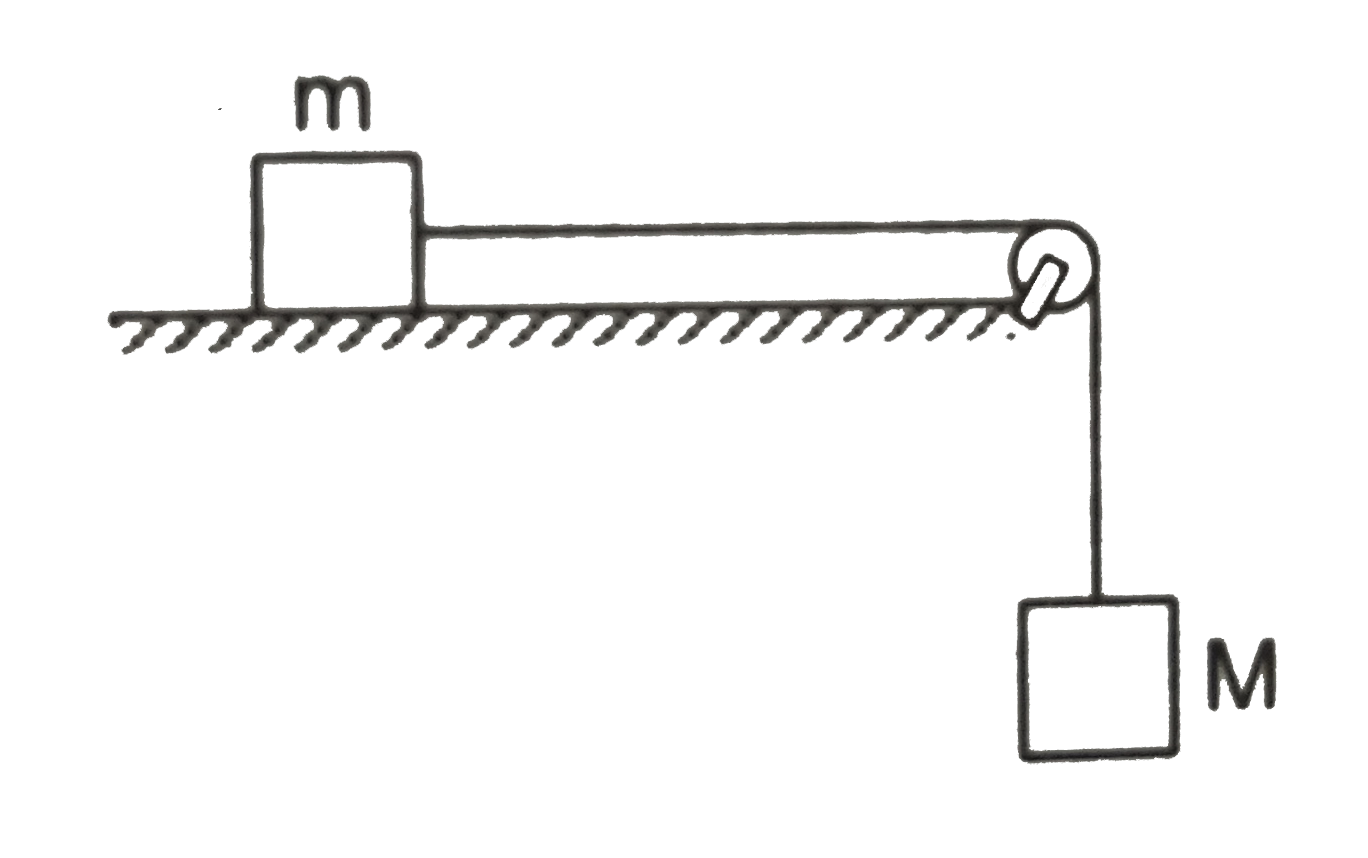 View Solution
View SolutionFigure shows two blocks of masses m and M connected by a string passing over a pulley. The horizontal table over which the mass m slides is smooth. The pulley has a radius r and moment of inertia I about its axis and it can freely rotate about this axis. Find the acceleration of the mass M assuming that the string does not slip on the pulley.
 View Solution
View SolutionString going over a pulley connects two blocks of masses m, and my. String and pulley are light. Calculate acceleration of centre of mass of blocks system.
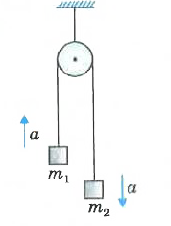 View Solution
View SolutionSolve the previous problem if the pulley has a moment of inertia I about its axis and the string does not slip over it.
View SolutionSolve the previous problem if the pulley has a moment of inertia I about its axis and the string does not slip over it.
View SolutionSolve the previous problem if the pulley has a moment of inertia I about its axis and the string does not slip over it.
View SolutionFigure shows two blocks of masses m and M connected bky a string pasing over a pulley. The horizontal table over which the mass m slides is smooth. The pulley has a radius r and moment of inertia I about its axis and it can freely rotte about this axis. Find the accelerationof the mass M asuming that the string does not slip on the pulley.
 View Solution
View SolutionTwo blocks A and B of masses 4m and m are connected to the ends of a light string which passes over a pulley of mass m and radius R. The system is released from test. Find the angular velocity of the pulley when block A has fallen through a height h.
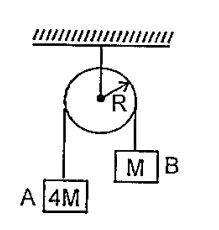 View Solution
View SolutionA pulley has the shape of a uniform solid disc of mass and radius . A string is wrapped over its rim and is pulled by a force of . The pulley is free to rotate about its axis. Initially, the pulley is at rest. Find the angular velocity and angle rotated by pulley in .
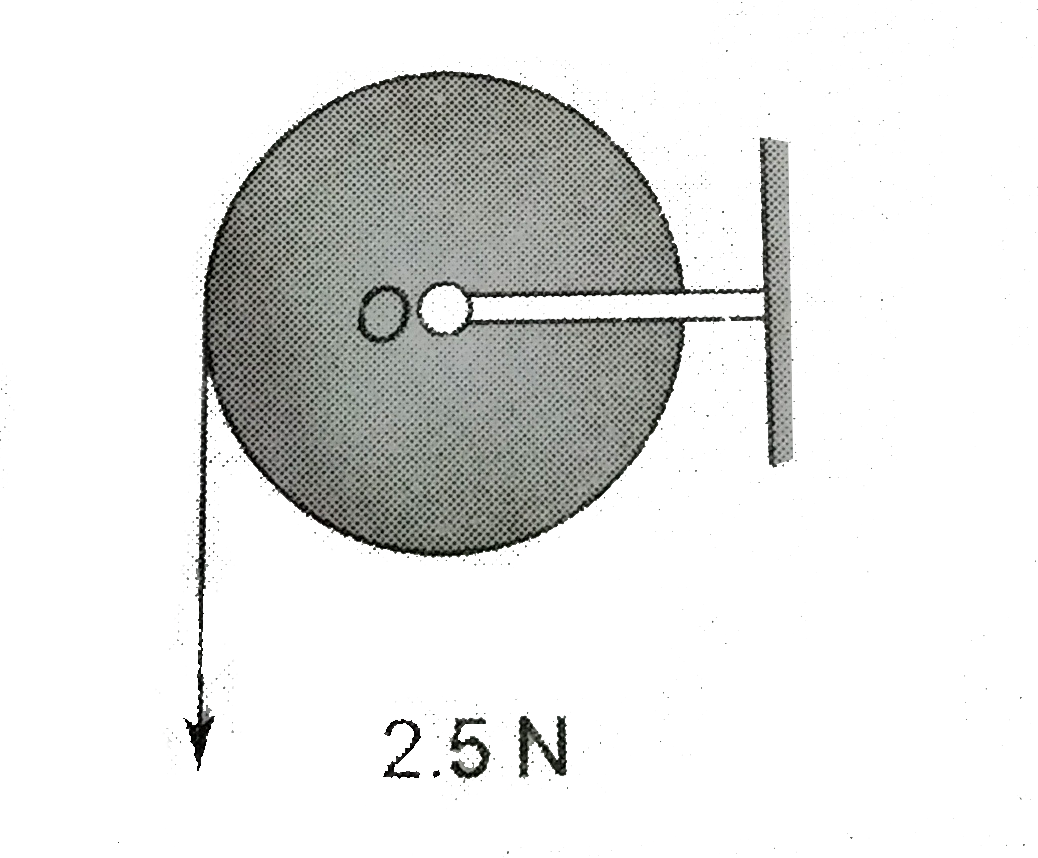 View Solution
View SolutionA string of negligible mass is wrapped on a cylindrical pulley of mass M and radius R. The other end of string is tied to a bucket of mass m. If the pulley rotates about a horizontal axis then the tension in the string is :
View SolutionA block of mass is attached at the end of an inextensible string which is wound over a rough pulley of mass and radius figure a. Assume the string does not slide over the pulley. Find the acceleration of the block when released.
View SolutionThe pulley of Atwood's machine has a moment of inertia 'I' about its axis and its radius is R. Find the magnitude of acceleration of the two blocks assuming the string is light and does not slip on the pulley.
View SolutionThe pulley of Atwood.s machine has a moment of inertia .I. about its axis and its radius is R. Find the magnitude of acceleration of the two blocks assuming the string is light and does not slip on he pulley.
View SolutionSystem is released from rest. Moment of inertia of pulley 'I'. Find angular speed of pulley when block falls by 'h'. (Given and assume no slipping between string and pulley).
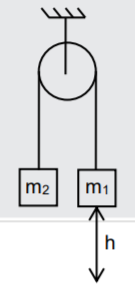 View Solution
View Solution
